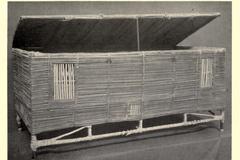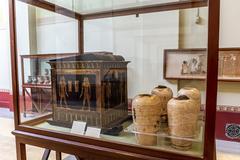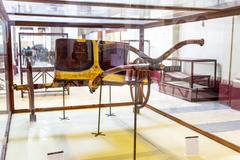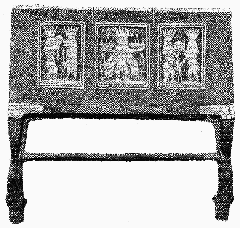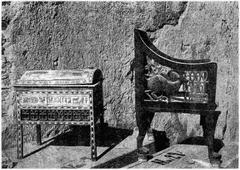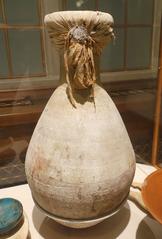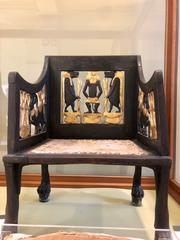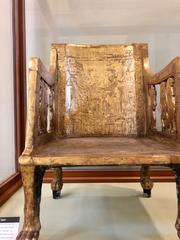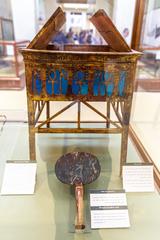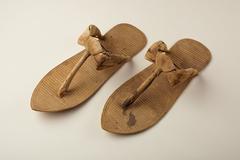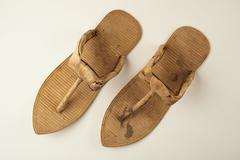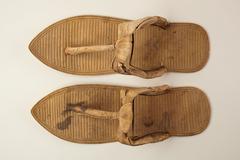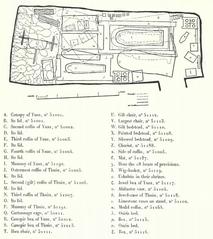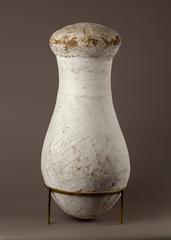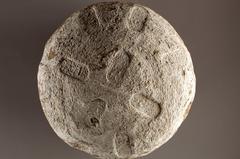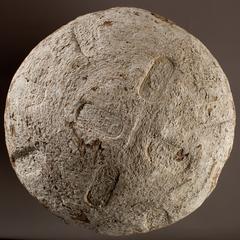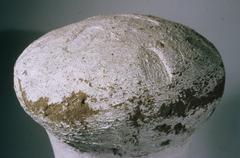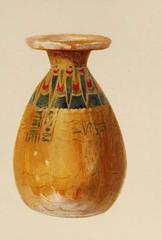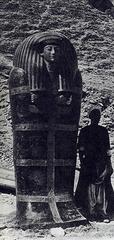
KV46 Visiting Hours, Tickets, and Guide to Luxor Historical Sites
Date: 14/06/2025
Introduction
KV46, the tomb of Yuya and Thuya, stands as a testament to the splendor of Egypt’s 18th Dynasty and is one of the most significant archaeological sites in Luxor’s Valley of the Kings. As the burial site of Queen Tiye’s parents—esteemed nobles who were grandparents of Akhenaten and great-grandparents of Tutankhamun—KV46 provides a rare and richly informative glimpse into elite New Kingdom funerary practices, artistry, and social hierarchy. This detailed guide covers KV46’s discovery, historical context, unique features, visitor information, and practical tips to help you plan an unforgettable visit to Luxor and its iconic tombs.
Table of Contents
- Introduction
- Discovery and Excavation of KV46
- Yuya, Thuya, and the 18th Dynasty Context
- Architectural Features of KV46
- Archaeological Significance and Tomb Contents
- Visiting KV46: Practical Information
- Cultural Etiquette and Responsible Tourism
- Frequently Asked Questions (FAQ)
- Visuals, Resources, and Further Reading
- Conclusion and Visitor Recommendations
Discovery and Excavation of KV46
KV46 was uncovered on February 5, 1905, by Egyptologist James E. Quibell under the patronage of Theodore M. Davis. The tomb’s entrance, concealed by a thick layer of limestone chips, had been overlooked by earlier explorers. Once revealed, Quibell and his team found the tomb largely intact—a rarity in the Valley. The tomb’s entrance, sealed but breached in antiquity, led to a chamber filled with over 200 funerary objects and the undisturbed mummies of Yuya and Thuya (egypt-museum.com; travel2egypt.org).
The remarkable preservation of both the mummies and the grave goods made KV46, at the time, the richest non-royal tomb yet found in Egypt, predating the discovery of Tutankhamun’s tomb (KV62) by nearly two decades (herasianadventures.com).
Yuya, Thuya, and the 18th Dynasty Context
Yuya and Thuya were prominent courtiers during Egypt’s 18th Dynasty (circa 1550–1292 BCE). Yuya held titles such as “Overseer of the Cattle of Min” and “Master of the Horse,” while Thuya was “Chief of the Harem of Min and Amun.” Their daughter, Queen Tiye, married Amenhotep III, placing Yuya and Thuya at the heart of one of Egypt’s most influential families (egypt-museum.com). The opulence of their burial reflects the permeability of status within New Kingdom society, where non-royals could be honored with near-pharaonic rites (weeklyblitz.net).
Architectural Features of KV46
KV46’s design is simple yet effective, typical of early 18th Dynasty tombs. It consists of:
- Entrance and Corridors: A staircase of fifteen steps leads to a descending corridor, followed by another short set of stairs and a secondary corridor.
- Burial Chamber: The single rectangular chamber features a deeper western third, likely to accommodate nested coffins. The walls are undecorated, save for black mason’s marks, reflecting the poor quality of the local limestone (egyptplanners.com).
Its straightforward layout contributed to its concealment and preservation, contrasting with the more complex, decorated royal tombs of later periods.
Archaeological Significance and Tomb Contents
KV46 is regarded as the most important non-royal tomb in the Valley of the Kings and a benchmark for understanding 18th Dynasty funerary customs. Notable finds include:
- Gilded Anthropoid Coffins: Nested coffins of Yuya and Thuya, richly decorated with gold and inlays (egypt-museum.com).
- Funerary Furniture: Beds, chariots, chairs, and storage chests, including the famed “ibex” chair.
- Canopic Equipment: Alabaster jars and chests for preserving internal organs.
- Jewelry and Personal Items: Amulets, jewelry, cosmetic containers, and sandals.
- Food Offerings and Storage Jars: Symbolic provisions for the afterlife.
Many of these treasures are displayed at the Egyptian Museum in Cairo, offering insight into the material culture and artistry of the era.
The Mummies of Yuya and Thuya
The mummies were exceptionally well-preserved. Thuya, for example, was found adorned with gold foil sandals and funerary jewelry, her body wrapped in resin-soaked linen. The quality of mummification and grave goods illustrates beliefs in resurrection and the importance of bodily integrity in the afterlife (egypt-museum.com).
Visiting KV46: Practical Information
Visiting Hours
The Valley of the Kings is generally open daily from 6:00 AM to 5:00 PM, though hours may vary by season or due to special events. KV46 itself is not always open to the public due to conservation needs and is often accessible only by special permit or on select tours (mrandmrsegypt.com).
Tickets and Admission
Standard Valley of the Kings tickets allow access to three tombs; additional or special tickets may be required for tombs like KV46. Tickets can be purchased at the main entrance or in advance through authorized vendors. Confirm in advance whether KV46 is open during your visit (thetouristchecklist.com).
Accessibility and Travel
The Valley is accessible by taxi, private car, or organized tours from Luxor. The terrain is rugged, with steps and uneven paths, making access challenging for those with mobility issues. The visitor center offers electric shuttle buses to minimize walking distances, but the final approach may require navigating stairs (mrandmrsegypt.com).
Guided Tours and Special Events
Guided tours, often led by Egyptologists, provide rich historical context and may grant access to special tombs, including KV46 on rare occasions. Some tours offer after-hours or private experiences, enhancing your visit.
Travel Tips and Nearby Attractions
- Best Time to Visit: October to April is optimal, with cooler temperatures (20°C–30°C/68°F–86°F). Early mornings avoid crowds and heat.
- Dress and Supplies: Wear comfortable shoes, carry water, and use sun protection.
- Nearby Sites: Consider visiting Tutankhamun’s tomb (KV62), the tomb of Seti I (KV17), the Temple of Hatshepsut, Luxor Temple, and Karnak Temple.
- Museum Visits: See many KV46 artifacts at the Egyptian Museum in Cairo (Ask Aladdin).
Cultural Etiquette and Responsible Tourism
- Respect Site Rules: Photography inside tombs is usually prohibited or requires a permit. Do not touch walls or artifacts.
- Dress Modestly: Appropriate attire is expected in all Egyptian heritage sites.
- Support Locals: Engage local guides and artisans to enrich your visit and benefit the community.
- Sustainability: Follow all conservation guidelines and stay informed about site closures or visitor limits (herasianadventures.com).
Frequently Asked Questions (FAQ)
Is KV46 open to the public?
KV46 is generally closed but may be included in special tours or accessible by research permit. Confirm access with your tour operator or at the ticket office.
What are the Valley of the Kings opening hours?
Typically 6:00 AM to 5:00 PM; hours may change seasonally.
How do I buy tickets for KV46?
Tickets are sold at the Valley of the Kings entrance; special permits are required for KV46.
Is the site accessible for disabled visitors?
Terrain is challenging; some shuttles and ramps are available, but tomb entrances are generally not wheelchair-friendly.
Can I take photos inside KV46?
Photography is usually not allowed inside tombs; permits may be available for a fee.
Visuals, Resources, and Further Reading
- Suggested Visuals: Images of KV46’s entrance, burial chamber, and major artifacts (e.g., “Gilded coffin of Yuya from KV46”).
- Interactive Resources: Maps and virtual tours of the Valley of the Kings.
Summary and Visitor Recommendations
KV46 stands as the most significant non-royal tomb in the Valley of the Kings, offering an unparalleled perspective on the lives, beliefs, and artistry of Egypt’s 18th Dynasty elite. Its discovery and preservation have enriched the field of Egyptology and continue to captivate visitors. Due to conservation efforts, access is limited—plan ahead, verify current visiting hours, and consider guided tours for the deepest experience. The Valley’s proximity to other world-famous monuments makes it a key destination for any traveler interested in Egypt’s timeless heritage (egypt-museum.com; mrandmrsegypt.com; herasianadventures.com; travel2egypt.org).
For the latest tips, updates, and audio-led tours, download the Audiala app and connect with us on social media.
Sources and Further Reading
- KV46 Tomb in the Valley of the Kings: Visiting Hours, Tickets, and Historical Significance, Landious Travel
- Exploring KV46: The Tomb of Yuya and Thuya – History, Architecture, and Visitor Information, Egypt Museum
- KV46 Visiting Hours, Tickets, and Travel Tips for the Valley of the Kings, Luxor, Mr & Mrs Egypt
- KV46 Visiting Hours, Tickets, and Cultural Insights at Luxor’s Valley of the Kings, Herasian Adventures
- Cultural and Archaeological Insights on KV46, The Tourist Checklist
- Egypt Unveils Archaeological Wonders in Luxor Discovery, Weekly Blitz
- Egypt’s Timeless Heritage and Tourism, Xinhua News
- KV46 Visiting Hours, Tickets, and Travel Tips, Ask Aladdin
